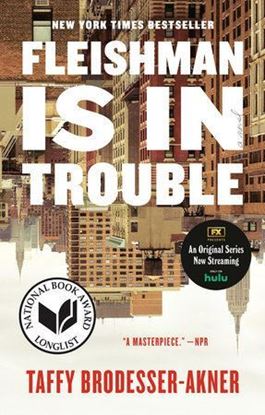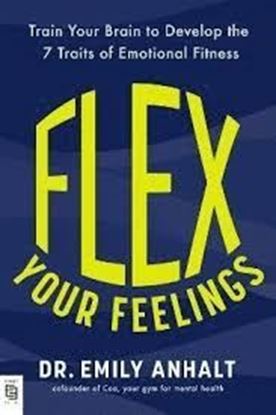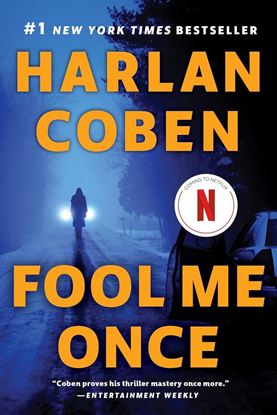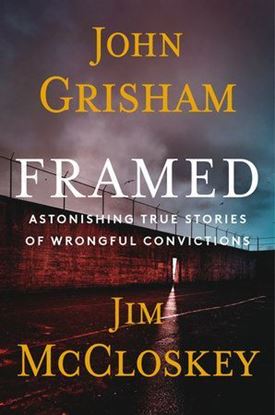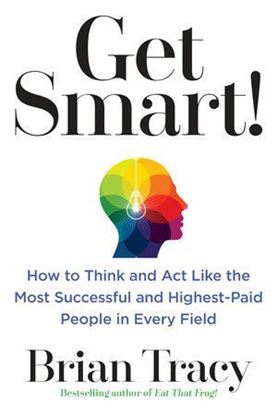

FLEISHMAN IS IN TROUBLE
Toby Fleishman thought he knew what to expect when he and his wife of almost fifteen years separated: weekends and every other holiday with the kids, some residual bitterness, the occasional moment of tension in their co-parenting negotiations. He could not have predicted that one day, in the middle of his summer of sexual emancipation, Rachel would just drop their two children off at his place and simply not return. He had been working so hard to find equilibrium in his single life. The winds of his optimism, long dormant, had finally begun to pick up. Now this.
As Toby tries to figure out where Rachel went, all while juggling his patients at the hospital, his never-ending parental duties, and his new app-assisted sexual popularity, his tidy narrative of the spurned husband with the too-ambitious wife is his sole consolation. But if Toby ever wants to truly understand what happened to Rachel and what happened to his marriage, he is going to have to consider that he might not have seen things all that clearly in the first place.
850
FLEX YOUR FEELING
We know how to push our bodies for peak physical fitness but when it W comes to our emotional health, many of us just wing it. What if you could coach your mind for greater satisfaction and success, just like you train your body to get stronger? That's the promise of Flex Your Feelings, a data-driven, step-by-step plan for developing the seven essential traits of emotional fitness necessary to become the best leader, entrepreneur, and human you can be.
Here's the good news: Emotional fitness can be LEARNED . even if you didn't. grow up with mentally strong role models, and even if you're not sure how to do it. Dr. Emily Anhalt psychologist to the Silicon Valley tech elite and cofounder of Coa, the gym for mental fitness offers a prescriptive, seven-step plan to help you develop the emotional strength and flexibility to cope with whatever comes your way. Ás you progress in your career and through your life, she explains, emotional intelligence isn't just a “nice to have” soft skill. It's a vital talent that allows you to show up as your best self, in good times and during tough moments. In Flex Your Feelings, you'll find a blueprint for building an emotional fitness practice that works for you so you can live it, every day.
1,350
FOOL ME ONCE (MOVIE-TI)
Former special ops pilot Maya, home from the war, sees an unthinkable image captured by her nanny cam while she is at work: her two-year-old daughter playing with Maya’s husband, Joe—who was brutally murdered two weeks earlier. The provocative question at the heart of the mystery: Can you believe everything you see with your own eyes, even when you desperately want to? To find the answer, Maya must finally come to terms with deep secrets and deceit in her own past before she can face the unbelievable truth about her husband—and herself.
1,250
FRAMED
John Grisham is known worldwide for his bestselling novels, but it’s his real-life passion for justice that led to his work with Jim McCloskey of Centurion Ministries, the first organization dedicated to exonerating innocent people who have been wrongly convicted. Together they offer an inside look at the many injustices in our criminal justice system.
A fundamental principle of our legal system is a presumption of innocence, but once someone has been found guilty, there is very little room to prove doubt. These ten true stories shed light on Americans who were innocent but found guilty and forced to sacrifice friends, families, and decades of their lives to prison while the guilty parties remained free. In each of the stories, John Grisham and Jim McCloskey recount the dramatic hard-fought battles for exoneration. They take a close look at what leads to wrongful convictions in the first place and the racism, misconduct, flawed testimony, and corruption in the court system that can make them so hard to reverse.
1,500
FULL TILT (DELUXE EDITION)
Kacey Dawson is a rising rock guitarist, living fast and burning out faster. When a concert in Vegas spirals into chaos, she wakes up on the couch of Jonah Fletcher, a quiet, artistic limo driver with a secret that's ticking down the days of his life.
Jonah has no room for distractions. His final months are mapped out: finish his glass art installation and leave behind a legacy. But Kacey crashes into his world like a supernova messy, vibrant, and impossible to ignore.
1,150
GET SMART!
In today’s constantly changing world, you have to be smart to get ahead. But the average person uses only about two percent of their mental ability. How can we learn to unleash our brain’s full potential to maximize our opportunities, like the most successful people do?
In Get Smart!, acclaimed success expert and bestselling author Brian Tracy reveals simple, proven ways to tap into our natural thinking talents and abilities and make quantum leaps toward achieving our dreams. In this indispensable guide, you’ll learn to:
· Train your brain to think in ways that create successful results
· Recognize and exploit growth opportunities in any situation
· Identify and eliminate negative patterns holding you back
· Plan, act, and achieve goals with greater precision and speed
Whether you want to increase sales, bolster creativity, or better navigate life’s unexpected changes, Get Smart! will help you tap into your powerful mental resources to obtain the results you want and reap the rewards successful people enjoy.
1,100

